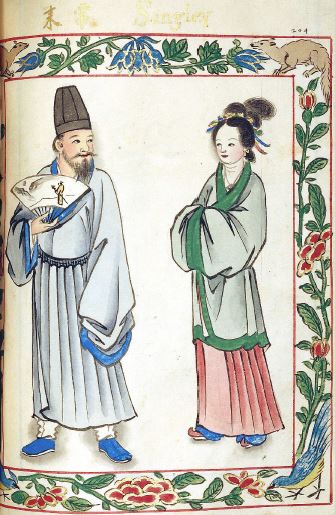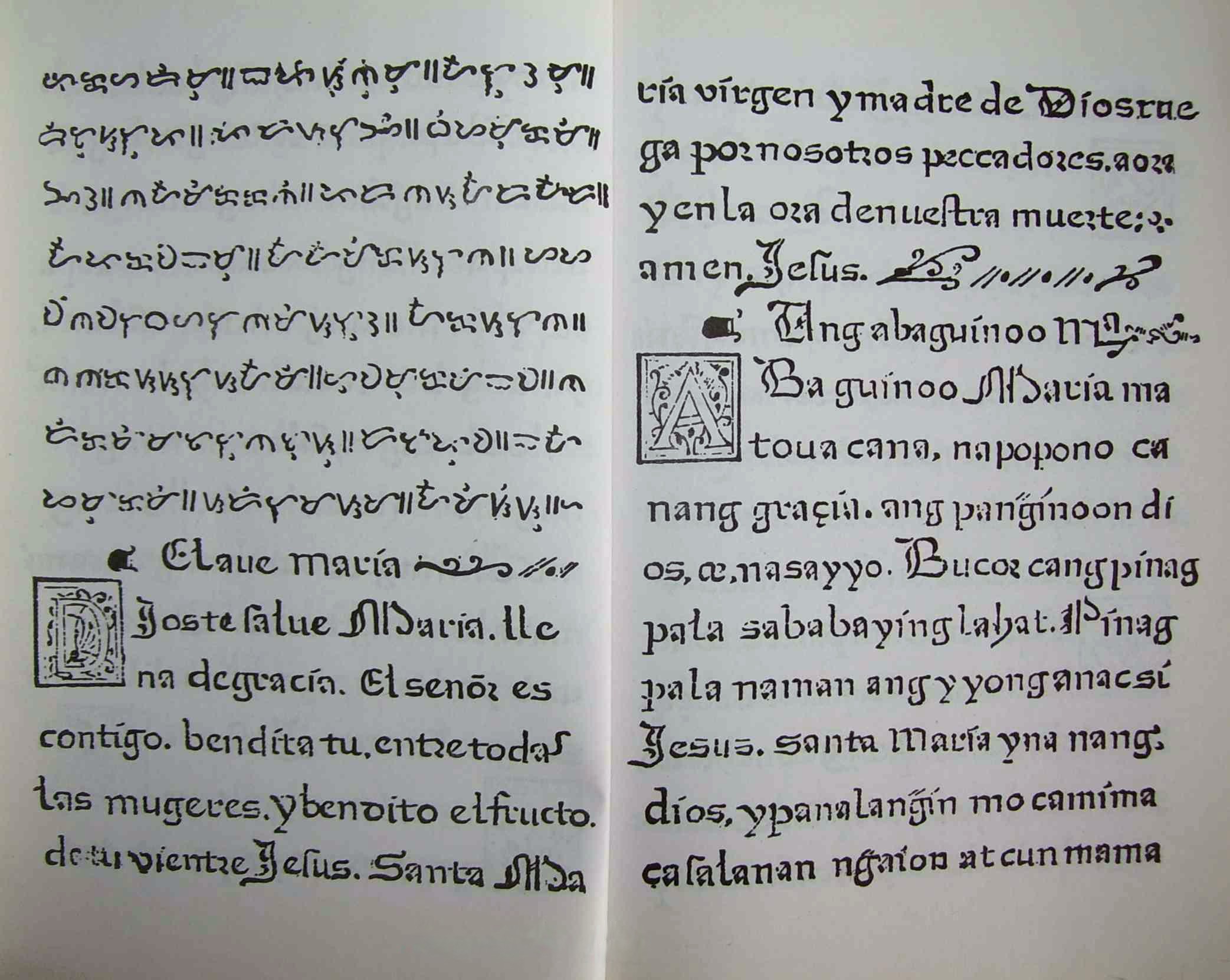|
Sangley
Sangley (English plural: ''Sangleys''; Spanish plural: ''Sangleyes'') and Mestizo de Sangley (Sangley mestizo, ''mestisong Sangley'', ''chino mestizo'' or Chinese mestizo) are archaic terms used in the Philippines during the Spanish colonial era to describe respectively a person of pure overseas Chinese ancestry and a person of mixed Chinese and native Filipino ancestry. The Sangley Chinese were ancestors to both modern Chinese Filipinos and modern Filipino mestizo descendants of the ''Mestizos de Sangley,'' also known as Chinese mestizos, which are mixed descendants of Sangley Chinese and native Filipinos. Chinese mestizos were ''mestizos'' (mixed peoples) in the Spanish Empire, classified together with other Filipino mestizos. The Spanish had such categories as indios ( for natives of the East Indies), (descendants of colonial ethnic Spanish and native-born Filipinos), the ''tornatrás'' (Spanish-Chinese mestizos, descendants of colonial Spanish Filipinos and Sangley ... [...More Info...] [...Related Items...] OR: [Wikipedia] [Google] [Baidu] |
Chinese Filipino
Chinese Filipinos (sometimes referred as Filipino Chinese or Chinoy/Tsinoy in the Philippines) are Filipinos of Chinese descent with ancestry mainly from Fujian, but are typically born and raised in the Philippines. Chinese Filipinos are one of the largest overseas Chinese communities in Southeast Asia. Chinese immigration to the Philippines occurred mostly during the Spanish Philippines, Spanish colonization of the islands between the 16th and 19th centuries, attracted by the lucrative trade of the Manila galleons. During this era, they were referred as the Sangley, who were mostly the Hokkien-speaking Hoklo people, Hokkien people, who later became the dominant group within the Filipino-Chinese community.The Birth of Globalization: The ... [...More Info...] [...Related Items...] OR: [Wikipedia] [Google] [Baidu] |
Philippine Hokkien
Philippine Hokkien is a dialect of the Hokkien language of the Southern Min branch of Min Chinese descended directly from Old Chinese of the Sinitic languages, Sinitic family, primarily spoken vernacularly by Chinese Filipinos in the Philippines, where it serves as the local Chinese language, Chinese ''lingua franca'' within the overseas Chinese community in the Philippines and acts as the heritage language of a majority of Chinese Filipinos. Despite currently acting mostly as an oral language, Hokkien as spoken in the Philippines did indeed historically have a written language and is actually one of the earliest sources for written Hokkien using both Chinese characters (traditionally via Classical Chinese () worded from and read in Hokkien) as early as around 1587 or 1593 through the ''Doctrina Christiana, Doctrina Christiana en letra y lengua china'' and using the Latin script as early as the 1590s in the Boxer Codex and was actually the earliest to systematically Romanization, ... [...More Info...] [...Related Items...] OR: [Wikipedia] [Google] [Baidu] |
Ethnic Groups In The Philippines
The Philippines is inhabited by more than 182 Ethnolinguistic group, ethnolinguistic groups, many of which are classified as "Indigenous Peoples" under the country's Indigenous Peoples' Rights Act of 1997. Traditionally-Muslim minorities from the southernmost island group of Mindanao are usually categorized together as Moro peoples, whether they are classified as Indigenous peoples or not. About 142 are classified as non-Muslim Indigenous people groups. Ethnolinguistic groups collectively known as the Lowland Christians, forms the majority ethnic group. The Muslim-majority, Muslim ethnolinguistic groups of Mindanao, Sulu Archipelago, Sulu, and Palawan (island), Palawan are collectively referred to as the Moro people, a broad category that includes some Indigenous people groups and some non-Indigenous people groups. With a population of over 5 million people, they comprise about 5% of the country's total population. About 142 of Indigenous peoples of the Philippines, the Phil ... [...More Info...] [...Related Items...] OR: [Wikipedia] [Google] [Baidu] |
Filipino Mestizos
In the Philippines, Filipino Mestizo (; Filipino/), or colloquially ''Tisoy'', is a name used to refer to people of mixed native Filipino and any foreign ancestry. The word ''mestizo'' itself is of Spanish origin; it was first used in the Americas to describe people of mixed Amerindian and European ancestry. Currently and historically, the Chinese mestizos were and are still ordinarily the most populous subgroup among mestizos; they have historically been very influential in the creation of Filipino nationalism. The Spanish mestizos also historically and currently exist as a smaller population, but remain a significant minority among mestizos which historically enjoyed prestigious status in Philippine society during Spanish colonial times. History Spanish period A Spanish expedition led by Miguel Lopez de Legazpi in 1565 started a period of Spanish colonization of the Philippines which lasted for 333 years. The Roman Catholic Church played an important role in t ... [...More Info...] [...Related Items...] OR: [Wikipedia] [Google] [Baidu] |
Philippines
The Philippines, officially the Republic of the Philippines, is an Archipelagic state, archipelagic country in Southeast Asia. Located in the western Pacific Ocean, it consists of List of islands of the Philippines, 7,641 islands, with a total area of roughly 300,000 square kilometers, which are broadly categorized in Island groups of the Philippines, three main geographical divisions from north to south: Luzon, Visayas, and Mindanao. With a population of over 110 million, it is the world's List of countries and dependencies by population, twelfth-most-populous country. The Philippines is bounded by the South China Sea to the west, the Philippine Sea to the east, and the Celebes Sea to the south. It shares maritime borders with Taiwan to the north, Japan to the northeast, Palau to the east and southeast, Indonesia to the south, Malaysia to the southwest, Vietnam to the west, and China to the northwest. It has Ethnic groups in the Philippines, diverse ethnicities and Culture o ... [...More Info...] [...Related Items...] OR: [Wikipedia] [Google] [Baidu] |
Overseas Chinese
Overseas Chinese people are Chinese people, people of Chinese origin who reside outside Greater China (mainland China, Hong Kong, Macau, and Taiwan). As of 2011, there were over 40.3 million overseas Chinese. As of 2023, there were 10.5 million people living outside mainland China who were born in mainland China. Overall, China has a low percent of population List of sovereign states by immigrant and emigrant population, living overseas. Terminology () refers to people of Chinese citizenship residing outside of either the China, PRC or Republic of China, ROC (Taiwan). The government of China realized that the overseas Chinese could be an asset, a source of foreign investment and a bridge to overseas knowledge; thus, it began to recognize the use of the term Huaqiao. Ching-Sue Kuik renders in English as "the Chinese wikt:sojourner, sojourner" and writes that the term is "used to disseminate, reinforce, and perpetuate a monolithic and essentialist Chinese identity" by both t ... [...More Info...] [...Related Items...] OR: [Wikipedia] [Google] [Baidu] |
History Of The Philippines (1565–1898)
The history of the Philippines from 1565 to 1898 is known as the Spanish colonial period, during which the Philippine Islands were ruled as the Captaincy General of the Philippines within the Spanish East Indies, initially under the Viceroyalty of New Spain, based in Mexico City, until the independence of the Mexican Empire from Spain in 1821. This resulted in direct Spanish control during a period of governmental instability there. The first documented European contact with the Philippines was made in 1521 by Ferdinand Magellan in his circumnavigation expedition, during which he was killed in the Battle of Mactan. Forty-four years later, a Spanish expedition led by Miguel López de Legazpi left modern Mexico and began the Spanish conquest of the Philippines in the late 16th century. Legazpi's expedition arrived in the Philippines in 1565, a year after an earnest intent to colonize the country, which was during the reign of Philip II of Spain, whose name has remained a ... [...More Info...] [...Related Items...] OR: [Wikipedia] [Google] [Baidu] |
Philippine Spanish
Philippine Spanish ( or ) is the variety of standard Spanish spoken in the Philippines, used primarily by Spanish Filipinos. Spanish as spoken in the Philippines contains a number of features that distinguishes it from other varieties of Spanish, combining features from both Peninsular and Latin American varieties of the language. Philippine Spanish also employs vocabulary unique to the dialect, reflecting influence from the native languages of the Philippines as well as broader sociolinguistic trends in Spanish, and is considered to be more linguistically conservative and uniform than Spanish spoken elsewhere. Officially regulated by the Philippine Academy of the Spanish Language (AFLE), up to a million people in the Philippines are claimed to be either proficient in or have knowledge of Spanish, with around 4,000 people claiming Spanish as their native language, although estimates vary widely. Distribution and number of speakers Philippine Spanish speakers may be foun ... [...More Info...] [...Related Items...] OR: [Wikipedia] [Google] [Baidu] |
Chavacano
Chavacano or Chabacano () is a group of Spanish-based creole language varieties spoken in the Philippines. The variety spoken in Zamboanga City, located in the southern Philippine island group of Mindanao, has the highest concentration of speakers. Other currently existing varieties are found in Cavite City and Ternate, located in the Cavite province on the island of Luzon. Chavacano is the only Spanish-based creole in Asia. The 2020 Census of Population and Housing counted 106,000 households generally speaking Chavacano. The one responsible for this Spanish creole was Don Sebastian Hurtado de Corcuera, then governor of Panama, who was also responsible for settling Zamboanga City by employing Peruvian soldiers and colonists. There was an Asian-American route, which led to traders and adventurers carrying silver from Peru through Panama to reach Acapulco, Mexico before sailing to Manila, Philippines using the famed Manila galleons. The different varieties of Chavacano dif ... [...More Info...] [...Related Items...] OR: [Wikipedia] [Google] [Baidu] |
Chinese People
The Chinese people, or simply Chinese, are people or ethnic groups identified with Greater China, China, usually through ethnicity, nationality, citizenship, or other affiliation. Chinese people are known as Zhongguoren () or as Huaren () by speakers of standard Chinese, including those living in Greater China as well as overseas Chinese. Although both terms both refer to Chinese people, their usage depends on the person and context. The former term is commonly (but not exclusively) used to refer to the citizens of the People's Republic of China—especially mainland China. The term Huaren is used to refer to ethnic Chinese, and is more often used for those who reside overseas or are non-citizens of China. The Han Chinese are the largest ethnic group in China, comprising approximately 92% of its Mainland China, Mainland population. [...More Info...] [...Related Items...] OR: [Wikipedia] [Google] [Baidu] |



